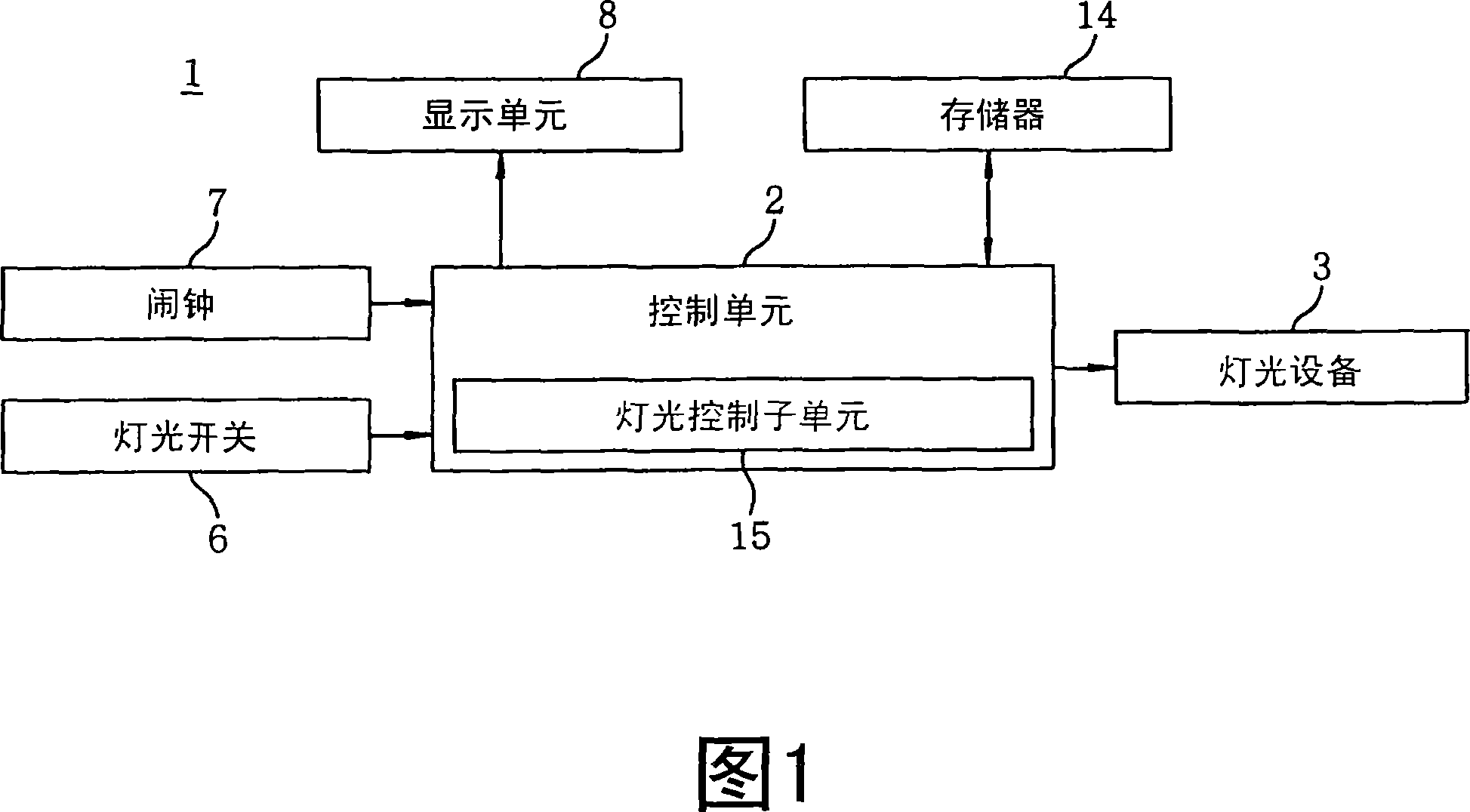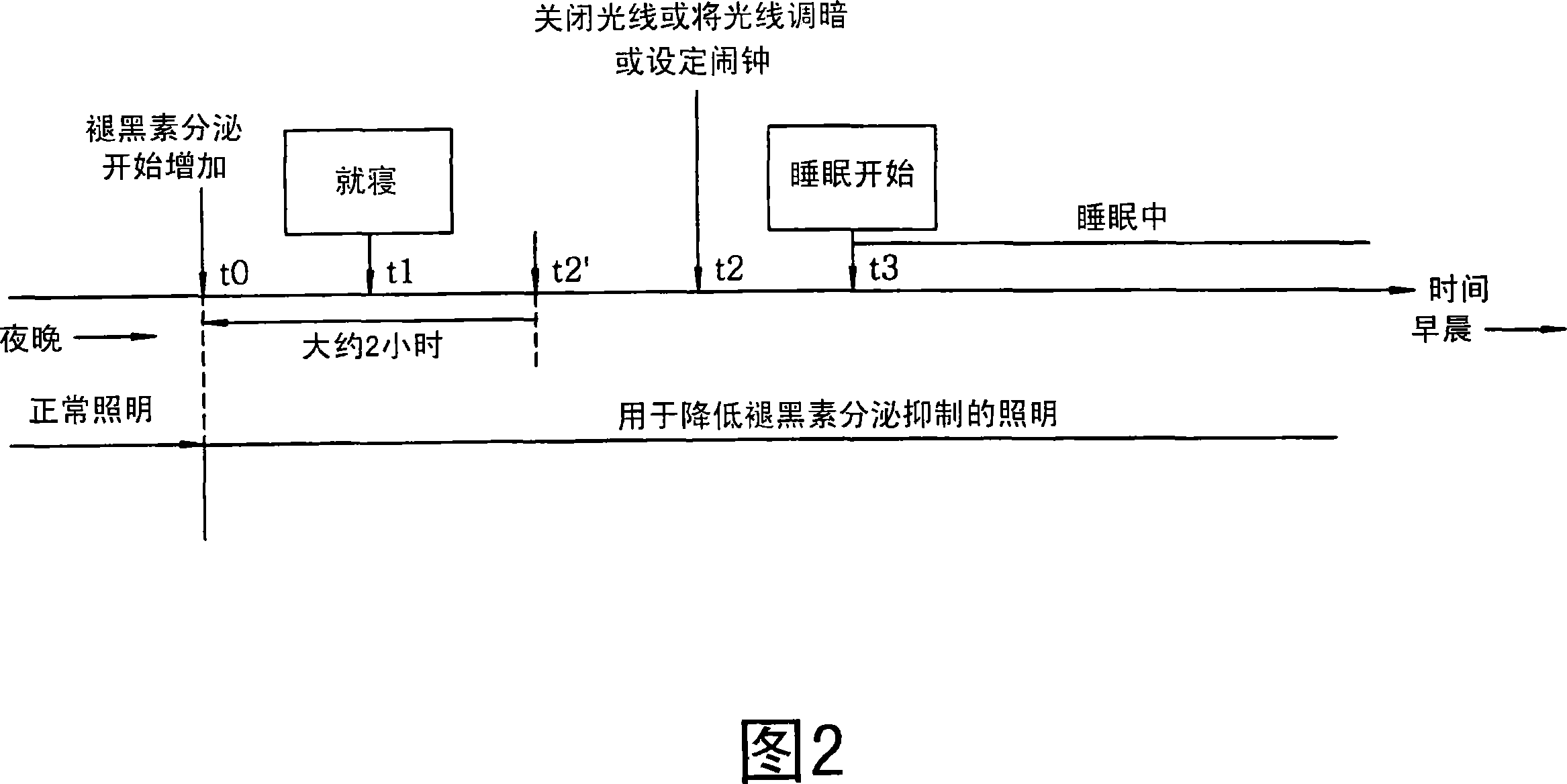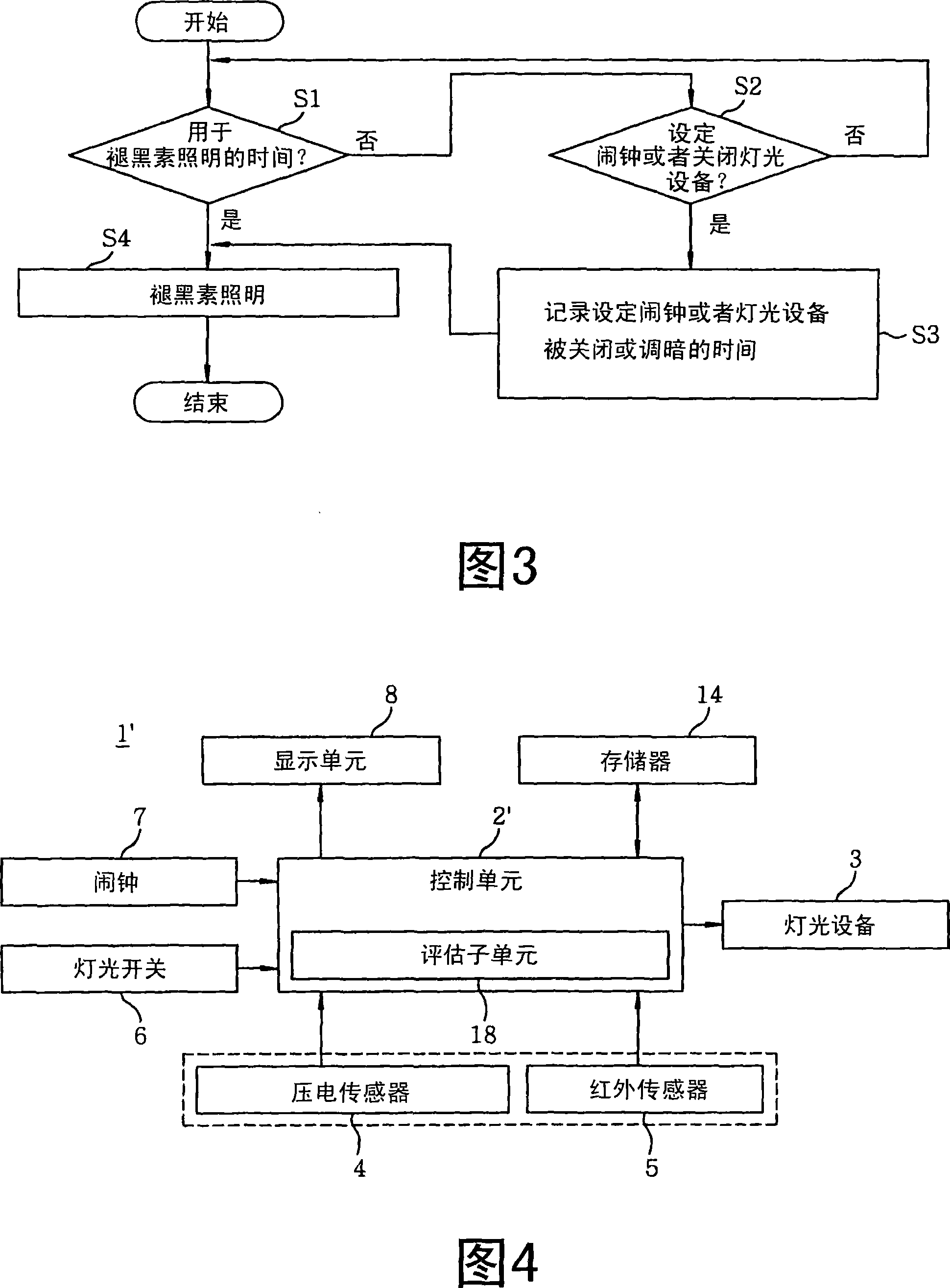Illumination and sleep evaluation system
A lighting system and sleep technology, applied in the field of sleep quality lighting systems
- Summary
- Abstract
- Description
- Claims
- Application Information
AI Technical Summary
Problems solved by technology
Method used
Image
Examples
no. 1 example
[0040] FIG. 1 shows the configuration of a lighting system capable of reducing melatonin suppression according to a first embodiment of the present invention. The lighting system 1 includes: a control unit 2 for controlling lighting; a lighting device 3 controlled by the control unit 2 to perform conversion from normal lighting to melatonin lighting; a lighting switch 6 for switching on and off through the user's operation Turn on, turn off, or dim the lighting device 3; the alarm clock 7; the display unit 8; and the memory 14 for storing the time when the user intends to fall asleep and the reference time for calculating the time to start melatonin lighting. The control unit 2 comprises a lighting control subunit 15 for controlling the transition from normal lighting to melatonin lighting, wherein the lighting control subunit 15 is preferably software installed in the control unit 2 . Melatonin lighting has a range of illuminance, for example, below 100 lux including complete...
no. 2 example
[0045] According to a second embodiment of the present invention, there is provided a lighting system capable of evaluating sleep quality by evaluating smoothness of falling asleep, sleep maintenance, and quality of awakening.
[0046] First, smoothness of falling asleep can be quantitatively evaluated by measuring sleep latency (ie, the amount of time required to fall asleep). In particular, the sleep intention time (ie, the time when the user intends to fall asleep) is set by detecting the operation of an alarm clock or a lighting switch. Also, the sleep onset time is obtained by measuring the user's body motion and determining the time when the body motion drops below a certain level as the sleep onset time. Finally, the sleep latency is calculated by obtaining the time difference between the sleep intention time and the sleep onset time, and the sleep latency thus calculated is used as an index regarding the smoothness of falling asleep.
[0047] Second, sleep maintenance...
no. 3 example
[0060] Fig. 8 shows a sleep management system 9 comprising a lighting system 1" according to a third embodiment of the invention, wherein the lighting system 1" is identical to the lighting system 1' except that it does not include a memory 14. Sleep management The system 9 includes: a lighting system 1″; a data storage unit 10 for storing the results of the sleep assessment; a communication unit for sending the results of the sleep assessment to the terminal device 11 via a communication channel; and a data processing unit 13 capable of For example, the Internet communicates with the terminal device 11 . The data storage unit 10, constituted by a general-purpose memory device, does not need to be embedded in the lighting system 1". Preferably, the data storage unit 10 is connected to the lighting system 1"on-line. The terminal 11 is, for example, a mobile phone, a PDA (Personal Digital Assistant) or a fax. The communication unit 12 is an interface for exchanging data with th...
PUM
 Login to View More
Login to View More Abstract
Description
Claims
Application Information
 Login to View More
Login to View More - R&D
- Intellectual Property
- Life Sciences
- Materials
- Tech Scout
- Unparalleled Data Quality
- Higher Quality Content
- 60% Fewer Hallucinations
Browse by: Latest US Patents, China's latest patents, Technical Efficacy Thesaurus, Application Domain, Technology Topic, Popular Technical Reports.
© 2025 PatSnap. All rights reserved.Legal|Privacy policy|Modern Slavery Act Transparency Statement|Sitemap|About US| Contact US: help@patsnap.com



